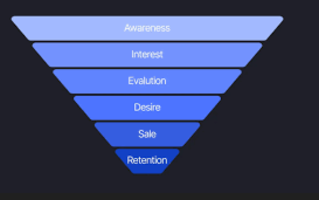Have you ever wondered why some brands seem to be everywhere online while others struggle to get noticed? The answer lies in something far more powerful than traditional advertising. It’s called content marketing, and it has completely transformed how businesses connect with their audiences in today’s digital landscape.
In the digital age, consumers have become remarkably skilled at ignoring traditional advertising. We skip YouTube ads, use ad blockers, and scroll past banner advertisements without a second thought. But we stop for stories. We engage with content that educates, entertains, or inspires us. This shift in consumer behavior has made content marketing not just important, but absolutely essential for any business hoping to thrive online.
The numbers tell a compelling story. Businesses that prioritize content marketing see conversion rates that are six times higher than those who don’t. Content marketing costs significantly less than traditional marketing while generating three times as many leads. These aren’t just statistics; they represent real businesses connecting with real people in meaningful ways.
What is Content Marketing and Its Importance in Digital Marketing?
Content marketing is the strategic approach of creating and distributing valuable, relevant, and consistent content to attract and retain a clearly defined audience. Unlike traditional advertising that interrupts people with messages they don’t want to hear; content marketing provides information that people are actively seeking.
At its core, content marketing is about telling stories and sharing expertise. It’s about positioning your brand as a helpful resource rather than just another company trying to make a sale. When done correctly, content marketing builds trust, establishes authority, and creates lasting relationships with customers.
One cannot stress the value of content marketing in digital marketing enough; it is the cornerstone upon which all other digital marketing initiatives rest. Your social media strategy needs content to share. Your email marketing campaigns require compelling content to send. Your SEO efforts depend on quality content to rank in search engines. Without strong content marketing, your entire digital marketing ecosystem struggles to function effectively.
Content marketing works because it aligns with how modern consumers make purchasing decisions. Before buying anything significant, people research extensively online. They read reviews, compare options, watch demonstrations, and seek expert opinions. Content marketing allows you to be present throughout this entire journey, providing the information consumers need at exactly the moment they need it.
Furthermore, content marketing has a compounding effect that traditional advertising lacks. A paid advertisement disappears the moment you stop funding it. But a well-crafted blog post, video, or infographic continues delivering value for months or even years after publication. This evergreen nature of content marketing means your investment keeps paying dividends long after the initial effort.
What are the 4 Cs of Content Marketing?
The four Cs of content marketing provide a framework for creating content that truly resonates with your audience and drives meaningful results.
Creation
Content creation is where everything begins. This involves producing original, high-quality material that serves your audience’s needs and interests. Creation isn’t just about writing blog posts or recording videos. It encompasses understanding your audience deeply, researching trending topics, identifying content gaps in your industry, and crafting messages that genuinely help people solve problems or achieve their goals.
Successful content creation requires creativity combined with strategy. You need to produce content that stands out in an oversaturated digital landscape while remaining authentic to your brand voice. This means investing time in brainstorming sessions, conducting keyword research, analyzing competitor content, and staying updated on industry trends.
The creation phase also involves choosing the right content formats, whether that’s written articles, podcasts, videos, infographics, or interactive tools.
Curation
Finding, arranging, and sharing significant content from various sources to your audience is known as content curation. Many businesses mistakenly believe they must create every piece of content from scratch. However, curation demonstrates that you’re plugged into your industry, you value quality regardless of its source, and you respect your audience’s time by filtering through the noise to deliver the best information.
Effective curation means adding your own perspective and commentary to shared content. You’re not simply reposting what others have said. Instead, you’re providing context, highlighting key takeaways, or explaining how the information relates to your audience’s specific situation. This positions you as a thoughtful industry voice rather than just a content producer.
Connection
Connection refers to building genuine relationships with your audience through your content. This goes beyond publishing and hoping people see it. Connection means engaging with comments, responding to questions, participating in discussions, and showing the human side of your brand.
In the digital age, people crave authentic connections. They want to feel heard and valued. Content that fosters connection acknowledges your audience as real people with real challenges, not just potential customers. This might involve sharing behind-the-scenes glimpses of your business, highlighting customer success stories, or addressing common pain points with empathy and understanding.
Conversion
While building relationships is crucial, content marketing must ultimately drive business results. Conversion represents the transformation of engaged audience members into customers, subscribers, or advocates for your brand. This doesn’t mean every piece of content should include a hard sell. Rather, conversion-focused content strategically guides people through your marketing funnel.
Conversion optimization in content marketing involves understanding the customer journey and creating content appropriate for each stage. Top-of-funnel content attracts and educates. Middle-of-funnel content nurtures and builds trust. Bottom-of-funnel content addresses objections and facilitates decision-making. By aligning your content with these stages, you naturally move people toward conversion without feeling pushy or sales-driven.
Why is Content Marketing Essential for Brand Awareness?
Brand awareness represents how familiar consumers are with your brand and how easily they recognize it. In the digital age, content marketing has become the most effective tool for building and maintaining brand awareness.
Traditional advertising can create immediate awareness, but it’s often superficial and fleeting. Content marketing builds deeper, more meaningful brand recognition by consistently delivering value. When people repeatedly encounter your helpful content while searching for information, your brand becomes associated with expertise and reliability.
Search engine visibility plays a massive role in brand awareness. When your content ranks highly for relevant keywords, you capture attention at the exact moment people are thinking about topics related to your business. This organic visibility is incredibly valuable because it comes with built-in credibility that paid advertisements lack.
Content marketing also amplifies brand awareness through sharing and word-of-mouth. When you create truly valuable content, people naturally share it with their networks. Each share introduces your brand to new audiences who arrive predisposed to trust you because the recommendation came from someone they know.
Social media platforms have transformed how brand awareness develops. Consistent, engaging content on social channels keeps your brand top-of-mind. It creates multiple touchpoints where potential customers encounter your brand in various contexts, strengthening recognition and recall.
Additionally, content marketing allows you to control your brand narrative. Instead of letting others define who you are, you actively shape perception through the stories you tell, the values you emphasize, and the expertise you demonstrate. This proactive approach to brand awareness is far more powerful than reactive reputation management.

What are the 7 As of Content Marketing?
The seven As of content marketing provide a comprehensive framework for developing and executing an effective content marketing strategy.
Awareness
The awareness stage focuses on making potential customers aware that your brand exists and that you can help solve their problems. Content at this stage should be educational and accessible, designed to attract people who are just beginning to recognize they have a need. Blog posts answering common questions, how-to videos, and informative infographics work exceptionally well for building awareness.
Appeal
Once people are aware of your brand, your content must appeal to them emotionally and intellectually. Appeal is about creating content that resonates with your audience’s values, aspirations, and preferences.
This might involve storytelling that reflects their experiences, visual design that aligns with their aesthetic preferences, or messaging that speaks to their deeper motivations.
Ask
The ask phase involves encouraging audience members to take small, low-commitment actions. This might be subscribing to your newsletter, following your social media accounts, downloading a free resource, or engaging with your content through comments or shares. These micro-conversions help move people deeper into your marketing ecosystem and provide valuable data about their interests.
Act
Acting represents the point where engaged audience members become customers. Content in this stage addresses final objections, provides detailed product information, offers comparisons, and includes clear calls to action. Case studies, product demonstrations, customer testimonials, and detailed guides are particularly effective for encouraging action.
Advocate
Advocacy occurs when satisfied customers become promoters of your brand. Content supporting advocacy encourages customers to share their positive experiences, leave reviews, and recommend your products or services to others. User-generated content campaigns, referral programs, and community-building initiatives all fall under the advocacy pillar.
Authority
Establishing authority means positioning your brand as a trusted expert in your field. This requires consistently producing high-quality, accurate content that demonstrates deep knowledge and provides genuine value. Thought leadership articles, research reports, expert interviews, and comprehensive guides help build authority over time.
Assessment
Assessment involves continuously measuring and analyzing your content marketing performance. This means tracking relevant metrics, understanding what content resonates with your audience, identifying areas for improvement, and adjusting your strategy based on data-driven insights. Without regular assessment, you’re essentially marketing blind, unable to optimize for better results.
Why is User-Generated Content Important in the Digital Age?
User-generated content refers to any content created by your customers, followers, or community members rather than your brand itself. This might include reviews, testimonials, social media posts featuring your products, photos, videos, or comments.
The importance of user-generated content in the digital age stems from fundamental shifts in how consumers evaluate brands and make purchasing decisions. Modern consumers are skeptical of traditional advertising and brand messaging. They trust other consumers far more than they trust brands themselves. User-generated content provides the social proof that skeptical consumers crave.
Authenticity represents one of the most valuable qualities in digital marketing, and user-generated content is inherently authentic. When real people share genuine experiences with your products or services, it carries exponentially more weight than any polished marketing message. This authenticity breaks through the noise of an over saturated digital landscape and creates connections based on trust.
User-generated content also provides tremendous cost efficiency. Instead of constantly creating content yourself, your satisfied customers become content creators. This doesn’t just save resources; it generates content at a scale and diversity that would be impossible for any single brand to achieve alone.
From an engagement perspective, user-generated content outperforms brand-created content across virtually every metric. People are more likely to interact with, share, and be influenced by content from their peers. When you feature user-generated content, you’re not just gaining content; you’re fostering community and encouraging further participation.
Search engines and social media algorithms favor content that generates genuine engagement. User-generated content naturally attracts comments, shares, and interactions, which signals to platforms that the content is valuable. This can significantly improve your visibility and reach without any additional advertising spend.
User-generated content also provides invaluable insights into how customers actually use and perceive your products. These unfiltered perspectives can inform product development, identify new use cases, and reveal opportunities for improvement that might never surface through formal market research.
How Content Marketing Drives Sustainable Business Growth
Sustainable business growth requires more than short-term sales spikes. It demands building lasting customer relationships, establishing market authority, and creating competitive advantages that endure over time. Content marketing excels at driving this kind of sustainable growth in ways that traditional marketing cannot match.
Content marketing creates compounding returns on investment. Unlike paid advertising that stops delivering results the moment you stop paying, quality content continues attracting, engaging, and converting customers indefinitely. A comprehensive blog post written today might still be generating leads five years from now. This evergreen nature means your content marketing investments build upon each other, creating exponential growth over time.
Customer acquisition costs represent a critical metric for any business. Content marketing consistently delivers lower acquisition costs compared to traditional marketing methods. By attracting customers organically through valuable content rather than paying for each click or impression, you dramatically improve marketing efficiency and profitability.
Content marketing also enhances customer lifetime value. When customers engage with your educational content, they develop deeper understanding of your products and industry. This increased knowledge leads to more appropriate purchases, higher satisfaction, and greater loyalty. Informed customers stick around longer and spend more over time.
Market differentiation becomes increasingly difficult as competition intensifies across industries. Content marketing provides a powerful way to stand out by showcasing your unique expertise, perspective, and approach. Your content becomes a competitive moat that’s difficult for competitors to replicate because it’s rooted in your specific knowledge and experience.
Sustainable growth requires adapting to changing market conditions. Content marketing provides continuous feedback about customer interests, questions, and challenges. This intelligence informs not just your marketing strategy but your entire business strategy, helping you stay aligned with market needs.

The Role of Content Marketing in SEO Success
Search engine optimization and content marketing are inseparably linked. You cannot achieve meaningful SEO success without strong content marketing, and content marketing significantly benefits from sound SEO practices.
Search engines exist to deliver the most relevant, helpful content to searchers. Their algorithms have become remarkably sophisticated at identifying quality content that genuinely serves user intent. This means the fundamental principles of good content marketing perfectly align with what search engines reward.
Keyword optimization remains important, but it’s evolved beyond simple keyword stuffing. Modern SEO requires creating comprehensive content that thoroughly addresses topics relevant to your target keywords. This means producing longer, more detailed content that covers subjects from multiple angles and answers related questions searchers might have.
Backlinks represent one of the most powerful ranking factors in SEO. Quality content naturally attracts backlinks as other websites reference, cite, or share your work. Creating genuinely valuable, original content becomes your most effective link-building strategy because others want to direct their audiences to your helpful resources.
User experience signals increasingly influence search rankings. Metrics like time on page, bounce rate, and pages per session tell search engines whether people find your content valuable. Engaging, well-structured content that keeps readers on your site sends positive signals that can improve rankings.
Topic clusters and pillar content strategies have become essential for SEO success. This involves creating comprehensive pillar pages on broad topics, then developing detailed cluster content addressing specific subtopics that link back to the pillar page. This content architecture helps search engines understand your expertise and authority on particular subjects.
Regular content publication signals to search engines that your website is active and maintained. Websites that consistently add fresh content typically rank better than those that remain static. This doesn’t mean publishing for the sake of publishing; quality always trumps quantity. However, maintaining a consistent content calendar supports both user engagement and SEO performance.
Building Customer Trust Through Content Marketing
Trust has become the currency of the digital age. With endless options available and information overload constant, consumers gravitate toward brands they trust. Content marketing builds this trust in ways that traditional advertising simply cannot.
Transparency represents a foundational element of trust-building content. When you openly share information, acknowledge limitations, and provide balanced perspectives, you demonstrate integrity. This might involve creating content that educates customers even if that education helps them realize they don’t need your most expensive option. Short-term revenue sacrifice builds long-term trust and loyalty.
Consistency in messaging, quality, and publishing schedule signals reliability. When audiences know they can depend on you for valuable insights on a regular basis, trust naturally develops. This consistency extends beyond just showing up; it includes maintaining standards, honoring your brand values, and delivering on promises.
Expertise demonstration through content establishes credibility. When you consistently provide accurate, insightful information that helps people solve real problems, you prove your competence. This expertise-based trust is particularly powerful because it’s earned through demonstrated value rather than claimed through advertising.
Addressing customer concerns directly builds trust by showing you understand and care about their challenges. Content that acknowledges common objections, answers difficult questions, or explores potential downsides demonstrates confidence and honesty. This approach respects your audience’s intelligence and decision-making process.
Social proof elements within content marketing amplify trust. Customer testimonials, case studies, and user-generated content show that others have trusted you and benefited from that trust. This third-party validation carries enormous weight in building confidence among potential customers.
Measuring Content Marketing Success
Effective content marketing requires measuring performance against clear objectives. Without measurement, you cannot know what’s working, what needs improvement, or how to allocate resources effectively. Website traffic metrics provide baseline insights into content performance. Page views, unique visitors, and traffic sources tell you how many people your content reaches and where they’re coming from. However, traffic alone doesn’t indicate success; you must analyze whether you’re attracting the right audience.
Engagement metrics reveal how audiences interact with your content. Time on page, bounce rate, scroll depth, and social shares indicate whether content resonates. High engagement suggests your content provides value and maintains interest, while low engagement signals potential issues with quality, relevance, or presentation.
Lead generation metrics connect content marketing to business outcomes. Newsletter signups, download requests, contact form submissions, and other conversion actions demonstrate that content successfully moves people through your marketing funnel. Tracking which content pieces generate the most leads helps optimize your content strategy.
Customer acquisition and revenue attribution show content marketing’s direct impact on business results. While attribution can be complex in multi-touch customer journeys, understanding which content influences purchases helps justify content marketing investments and guide strategy.
SEO metrics including keyword rankings, organic traffic growth, and backlink acquisition measure content’s search engine performance. Improving visibility in search results directly impacts business growth by consistently delivering qualified traffic.
Brand awareness metrics such as branded search volume, social media mentions, and direct traffic indicate whether content marketing successfully increases recognition and recall. Growing brand awareness creates a foundation for all other marketing efforts.
FAQs
What makes content marketing different from traditional marketing?
Content marketing focuses on providing valuable information that audiences actively seek, while traditional marketing interrupts people with promotional messages. Content marketing builds relationships by offering education, entertainment, or inspiration without requiring immediate purchase. Traditional marketing typically promotes products directly through advertisements.
Content marketing creates lasting assets that continue delivering value over time, whereas traditional advertising stops working when you stop paying for it. The fundamental difference lies in approach: content marketing attracts interested audiences by being helpful, while traditional marketing pushes messages to potentially uninterested audiences.
How long does it take for content marketing to start producing results?
Content marketing typically requires patience, with meaningful results emerging after several months of consistent effort. Most businesses begin seeing initial traffic increases within three to six months of regular content publication. However, substantial business impact including significant lead generation and revenue attribution often takes six to twelve months or longer.
The timeline varies based on factors including industry competition, content quality, publishing frequency, and existing brand authority. Unlike paid advertising that delivers immediate but temporary results, content marketing builds momentum gradually but creates lasting value.
Can small businesses compete with large companies through content marketing?
Absolutely. Content marketing actually levels the playing field between small businesses and large corporations. Small businesses often have advantages including deeper customer relationships, specialized niche expertise, and greater agility in responding to market changes. These strengths translate beautifully into content marketing.
Small businesses can create more personalized, authentic content that resonates with specific audiences rather than attempting broad appeal. Limited resources encourage focus on specific topics where you can truly excel. Many small businesses outperform larger competitors in content marketing by being more genuine, responsive, and specialized rather than trying to compete on volume or budget.
What types of content work best for content marketing?
The most effective content types depend on your audience preferences, business goals, and available resources. Blog posts remain popular because they support SEO, provide educational value, and are relatively accessible to produce. Video content generates exceptional engagement and works well for demonstrations, explanations, and storytelling. Infographics present complex information visually and earn shares across social platforms. Podcasts build intimate connections with audiences during commutes or workouts.
Case studies and white papers establish authority with B2B audiences. Social media content maintains ongoing engagement and brand visibility. The best approach involves diversifying content types based on where your audience spends time and how they prefer consuming information.
How often should businesses publish new content?
Publishing frequency should balance consistency with quality. Regular publication schedules help build audience expectations and support SEO, but poor-quality content published frequently damages your brand more than it helps. Many successful businesses publish blog content weekly, though some thrive with biweekly or even monthly schedules if content is exceptionally thorough and valuable.
Social media content typically requires more frequent posting, often daily or multiple times daily depending on the platform. Email newsletters might go out weekly or monthly. The key is establishing a sustainable schedule you can maintain consistently while preserving quality standards. Starting with less frequent, high-quality content and gradually increasing frequency as you build capacity proves more effective than launching ambitiously and burning out.
Conclusion
The importance of content marketing in the digital age extends far beyond simply creating blog posts or social media updates. It represents a fundamental shift in how businesses build relationships, establish authority, and drive sustainable growth. In a world where consumers have unprecedented control over the information they consume and the brands they engage with, content marketing provides the bridge between business objectives and customer needs.
Content marketing succeeds because it aligns with how modern consumers research, evaluate, and make purchasing decisions. By providing genuine value without demanding immediate returns, content marketing builds the trust and credibility that form the foundation of lasting customer relationships. The compound effect of quality content means your marketing investments continue delivering returns long after publication, creating efficiency that traditional advertising cannot match.
The question is no longer whether content marketing matters in the digital age. The evidence overwhelmingly confirms its importance. The real question is whether your business will embrace content marketing’s potential to transform how you attract, engage, and delight customers in an increasingly digital world. The importance of content marketing in the digital age is clear, and the time to act is now.



